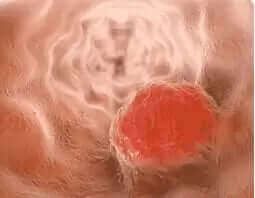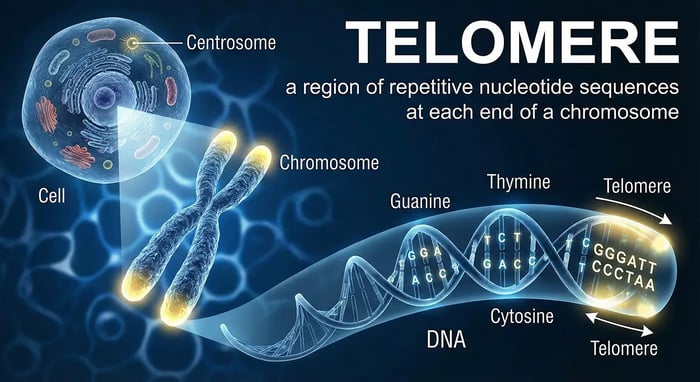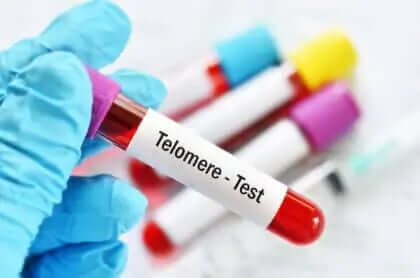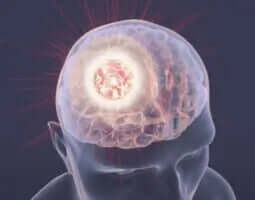How Young Blood Can Rejuvenate the Old: Scientific Breakthroughs in Age Reversal
Revolutionary scientific discoveries reveal how young blood can rejuvenate aging organisms, offering unprecedented hope for those seeking to reverse the effects of time. This comprehensive guide explores groundbreaking research that demonstrates the remarkable power of blood-based compounds to restore youthful vitality, enhance cognitive function, and rebuild deteriorating tissues.
Understanding How Blood Components Rejuvenate Aging Systems
The quest to rejuvenate the human body has captivated scientists for centuries, but recent breakthroughs have unveiled astonishing possibilities. The immune system serves as the perfect laboratory for studying rejuvenation processes because immune cells can be easily extracted through simple blood draws, studied extensively, and potentially reintroduced through transfusions. Beyond immune cells, blood contains a complex mixture of gases, nutrients, proteins, and other dissolved components that scientists now recognize as key players in the rejuvenation process.
What makes blood particularly fascinating for rejuvenation research is its accessibility and immediate impact on cellular health. Every drop contains thousands of bioactive molecules that communicate with cells throughout the body, triggering repair mechanisms and promoting regeneration. These discoveries open doors to transformative treatments that could help millions rejuvenate their bodies naturally.
Landmark Stanford Study: Young Blood's Power to Rejuvenate
A pioneering study from Stanford University nearly a decade ago revolutionized our understanding of how to rejuvenate aging tissues. Researchers connected the circulatory systems of young and old rodents, creating a shared bloodstream that allowed young blood factors to flow into older organisms. The results were nothing short of miraculous.
The elderly mice experienced profound transformations that scientists could hardly believe:
- Muscle regeneration accelerated dramatically, restoring strength and function to levels typically seen in much younger animals
- Skin thickness increased, reversing the characteristic thinning that accompanies aging
- Bone marrow cell production surged, returning to youthful levels that support robust immune function
- Overall vitality improved, with mice displaying increased energy and activity
This groundbreaking research published in Nature (2005, vol. 433, page 760) proved definitively that factors within young blood possess the remarkable ability to rejuvenate multiple organ systems simultaneously. The implications for human health are staggering, suggesting that the fountain of youth might flow through our veins.
Recent Breakthroughs: Multiple Universities Confirm Rejuvenation Effects
Building on these foundational discoveries, three independent research teams from prestigious institutions have recently published compelling evidence that confirms and expands our understanding of blood-based rejuvenation. These studies demonstrate that we can harness specific blood components to rejuvenate aging bodies in targeted, predictable ways.
Stanford's Cognitive Rejuvenation Discovery
Stanford researchers took a refined approach by isolating blood plasma from young mice and injecting it into elderly subjects. Their focus on cognitive function yielded extraordinary results that offer hope to millions concerned about mental decline. The study, published in Nature Medicine (2014, doi:10.1038/nm.3569), revealed that plasma treatment could rejuvenate brain function in measurable, meaningful ways.
Treated mice demonstrated remarkable improvements in:
- Memory formation and recall, performing significantly better on standardized cognitive tests
- Learning capacity, acquiring new skills faster than untreated elderly mice
- Spatial navigation, finding their way through mazes with youthful precision
- Problem-solving abilities, tackling complex challenges with renewed mental clarity
These findings suggest that plasma components can rejuvenate neural networks, potentially offering new treatments for age-related cognitive decline and neurodegenerative diseases.
Harvard's Dual Studies: GDF11 as a Rejuvenation Powerhouse
Two Harvard research teams independently investigated growth differentiation factor 11 (GDF11), a protein found abundantly in young blood but declining with age. Their complementary studies, both published in Science (2014, vol. 344, pages 630 and 649), revealed GDF11's extraordinary capacity to rejuvenate multiple body systems.
Vascular and Sensory Rejuvenation
The first Harvard team focused on how GDF11 could rejuvenate the vascular system that nourishes brain tissue. As we age, blood vessels deteriorate, depriving neurons of essential nutrients and oxygen. This vascular decline contributes to sensory loss, particularly affecting our sense of smell.
When researchers administered GDF11 to elderly mice, they observed:
- Blood vessel regeneration throughout the brain, creating new pathways for nutrient delivery
- Restored olfactory function, with mice regaining their youthful ability to detect and distinguish scents
- Enhanced neuronal health, as improved blood flow rejuvenated brain cells
- Increased neurogenesis, the formation of new neurons even in advanced age
Muscular and Physical Rejuvenation
The second Harvard team examined how GDF11 could rejuvenate muscle tissue and physical performance. Their findings provide hope for maintaining strength and vitality throughout life:
- DNA integrity improved in muscle cells, reversing age-related genetic damage
- Muscle strength increased to levels comparable to much younger animals
- Endurance capacity expanded, allowing sustained physical activity
- Recovery time shortened after exercise, mimicking youthful resilience
The Science Behind Blood-Based Rejuvenation
Understanding how young blood factors rejuvenate aging bodies requires examining the complex biological mechanisms at play. When GDF11 and other youth-associated proteins enter the bloodstream, they trigger cascading effects that rejuvenate cells throughout the body.
Cellular Rejuvenation Pathways
Young blood factors activate multiple pathways that rejuvenate cells:
- Stem cell activation: Youth factors awaken dormant stem cells, enabling tissue regeneration
- Mitochondrial renewal: Energy production improves as cellular powerhouses rejuvenate
- Protein synthesis enhancement: Cells produce proteins more efficiently, supporting repair and growth
- Inflammatory reduction: Chronic inflammation decreases, allowing tissues to heal and rejuvenate
- Telomere protection: Cellular aging markers stabilize, potentially extending cell lifespan
Systemic Rejuvenation Effects
The beauty of blood-based rejuvenation lies in its comprehensive impact. Unlike treatments targeting single organs, young blood factors rejuvenate multiple systems simultaneously:
- Cardiovascular system: Heart function improves, blood pressure normalizes
- Immune system: Defense mechanisms strengthen, infection resistance increases
- Nervous system: Neural connections multiply, cognitive function sharpens
- Endocrine system: Hormone production balances, metabolism optimizes
- Musculoskeletal system: Bones strengthen, muscles rebuild, joints rejuvenate
Practical Applications: How to Rejuvenate Your Body Today
While direct GDF11 treatments await human trials, understanding these mechanisms empowers us to rejuvenate our bodies through evidence-based strategies. Here are scientifically-supported methods to naturally boost rejuvenation factors:
1. Exercise to Rejuvenate
Regular physical activity stimulates production of rejuvenation factors similar to those found in young blood:
- High-intensity interval training triggers growth factor release
- Resistance training promotes muscle rejuvenation
- Cardiovascular exercise enhances blood flow and nutrient delivery
- Flexibility work maintains joint health and mobility
2. Nutrition That Helps Rejuvenate
Specific nutrients support your body's natural rejuvenation processes:
- Omega-3 fatty acids reduce inflammation and support brain health
- Antioxidants protect cells from damage and promote repair
- Protein provides building blocks for tissue rejuvenation
- Vitamin D supports immune function and cellular health
3. Sleep to Rejuvenate
Quality sleep activates powerful rejuvenation mechanisms:
- Growth hormone release peaks during deep sleep
- Cellular repair accelerates when the body rests
- Brain detoxification removes metabolic waste
- Memory consolidation strengthens cognitive function
4. Stress Management to Rejuvenate
Chronic stress accelerates aging, while effective management helps rejuvenate:
- Meditation reduces inflammatory markers
- Deep breathing improves oxygenation
- Social connections boost immune function
- Nature exposure lowers stress hormones
The Future of Rejuvenation Medicine
As research progresses, the possibilities for helping people rejuvenate their bodies expand exponentially. Scientists worldwide are developing innovative approaches based on these blood factor discoveries:
Emerging Rejuvenation Technologies
- Synthetic GDF11 production could provide therapeutic doses without blood transfusions
- Gene therapy might activate natural rejuvenation factor production
- Targeted delivery systems could concentrate rejuvenation factors where needed most
- Combination therapies may amplify rejuvenation effects
Clinical Trials and Human Applications
The transition from animal studies to human applications requires careful research, but progress continues. Several biotech companies are developing treatments to help people rejuvenate based on these discoveries. Early human trials focus on safety while measuring biomarkers of rejuvenation.
Important Safety Considerations
While the science of blood-based rejuvenation fascinates, safety remains paramount. The research clearly shows that specific blood factors can rejuvenate aging bodies, but this doesn't mean consuming blood directly. Human physiology lacks mechanisms to safely process large amounts of dietary blood due to its high iron content, which can cause severe toxicity.
Instead, future treatments will likely involve:
- Purified protein injections containing specific rejuvenation factors
- Intravenous treatments with carefully controlled dosages
- Pharmaceutical preparations that stimulate natural rejuvenation factor production
- Combination approaches integrating multiple rejuvenation strategies
Conclusion: The Promise of Rejuvenation
The discovery that young blood can rejuvenate aging bodies represents one of the most exciting developments in modern medicine. From Stanford's initial fusion experiments to Harvard's identification of GDF11, each study builds evidence that rejuvenation is not just possible but achievable through scientific understanding.
These breakthroughs offer hope to everyone seeking to maintain vitality, cognitive sharpness, and physical strength throughout life. As research continues, we move closer to treatments that could help millions rejuvenate their bodies, extending not just lifespan but healthspan—the years we live in vibrant health.
The journey to rejuvenate the human body has only begun. With each discovery, we unlock new possibilities for reversing age-related decline and restoring youthful function. The future of rejuvenation medicine shines bright, promising a world where aging becomes optional rather than inevitable.
Frequently Asked Questions About Blood-Based Rejuvenation
Can young blood really rejuvenate old organisms?
Yes, multiple peer-reviewed studies from Stanford and Harvard have definitively proven that young blood contains factors that can rejuvenate aging organisms. These studies showed improvements in muscle regeneration, cognitive function, skin thickness, bone marrow health, and sensory abilities. The key rejuvenation factor identified is GDF11, a protein that decreases with age but can restore youthful function when supplemented.
What is GDF11 and how does it rejuvenate the body?
GDF11 (Growth Differentiation Factor 11) is a naturally occurring protein found in higher concentrations in young blood. It works to rejuvenate the body by activating stem cells, improving blood vessel formation, enhancing DNA integrity in cells, reducing inflammation, and promoting tissue regeneration. When administered to elderly mice, GDF11 restored muscle strength, improved cognitive function, and reversed sensory decline.
How can I naturally rejuvenate my body without blood transfusions?
You can naturally rejuvenate your body through several scientifically-proven methods: engage in regular high-intensity exercise to boost growth factors, consume a nutrient-rich diet with omega-3s and antioxidants, prioritize 7-9 hours of quality sleep nightly, manage stress through meditation or nature exposure, maintain strong social connections, and stay hydrated. These lifestyle factors stimulate your body's natural rejuvenation mechanisms similar to young blood factors.
When will blood-based rejuvenation treatments be available for humans?
While the exact timeline remains uncertain, several biotech companies are actively developing treatments based on blood rejuvenation research. Human safety trials are beginning, with some estimates suggesting therapeutic applications could emerge within 5-10 years. Current focus areas include synthetic GDF11 production, targeted delivery systems, and combination therapies that safely harness the power to rejuvenate without requiring actual blood transfusions.
What specific benefits can blood factors provide to rejuvenate aging bodies?
Blood rejuvenation factors provide comprehensive benefits across multiple body systems: enhanced memory and cognitive function, restored muscle strength and endurance, improved cardiovascular health, regenerated blood vessels, reversed skin thinning, increased bone density, restored sensory functions like smell, improved DNA integrity in cells, reduced chronic inflammation, and activated dormant stem cells. These benefits work synergistically to rejuvenate the entire body rather than just individual organs.
Is it safe to drink blood to rejuvenate like vampires in fiction?
No, drinking blood is dangerous and will not rejuvenate your body. Humans lack the biological mechanisms to safely process dietary blood, and consuming it can cause iron toxicity and other serious health problems. The rejuvenation effects seen in research come from specific proteins like GDF11 administered through injection or IV, not from consuming whole blood. Future treatments will use purified factors or synthetic compounds, not blood consumption.
How do scientists measure if treatments successfully rejuvenate the body?
Scientists use multiple objective measures to verify rejuvenation: cognitive tests assess memory and learning improvements, physical performance tests measure strength and endurance gains, cellular analysis examines DNA integrity and stem cell activation, blood tests track biomarkers of aging and inflammation, imaging studies visualize tissue regeneration and blood vessel growth, and sensory tests evaluate functions like smell and vision. These comprehensive assessments ensure that rejuvenation occurs at molecular, cellular, and functional levels.
Can exercise and diet really help rejuvenate my body like young blood factors?
Yes, research shows that specific lifestyle interventions can stimulate similar rejuvenation pathways as young blood factors. High-intensity exercise increases growth hormone and BDNF production, resistance training activates muscle stem cells, omega-3 fatty acids reduce inflammation, intermittent fasting triggers cellular cleanup processes, and quality sleep promotes growth factor release. While not as dramatic as direct GDF11 treatment, these natural methods significantly rejuvenate body systems and are available today.
What age-related conditions might blood-based treatments help rejuvenate?
Blood-based rejuvenation shows promise for numerous age-related conditions: cognitive decline and memory loss, muscle weakness and sarcopenia, cardiovascular disease, osteoporosis and bone fragility, skin aging and wound healing, sensory decline including vision and smell, metabolic disorders, immune system weakness, and neurodegenerative diseases. By addressing multiple aging mechanisms simultaneously, these treatments could rejuvenate overall health rather than targeting single conditions.
How long do the effects last when using blood factors to rejuvenate?
In animal studies, rejuvenation effects from blood factor treatments typically last several weeks to months, with some benefits persisting longer. The duration depends on the specific factor used, dosage, and individual response. Muscle and cognitive improvements often require periodic treatments to maintain, while some cellular changes like improved DNA integrity may have longer-lasting effects. Future human treatments will likely involve regular administration to sustain rejuvenation benefits, similar to other anti-aging therapies.







